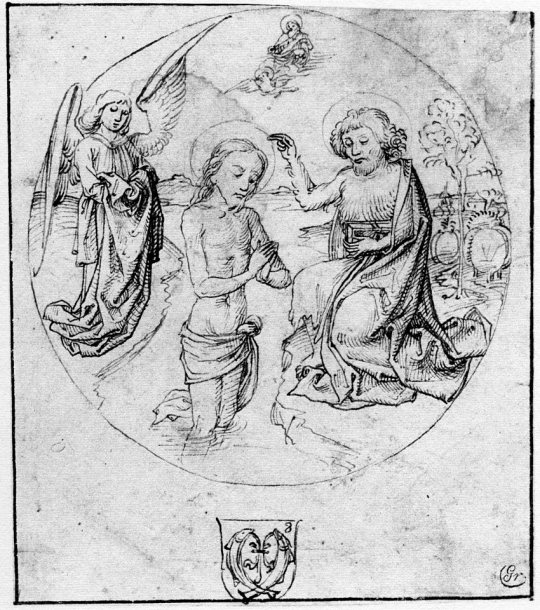#German Baptist
Explore tagged Tumblr posts
Text

Fjallkona (The Lady of the Mountain), the personification of Iceland. Engraving by Johann Baptist Zwecker, printed as the frontispiece to the English translation of Icelandic Legends by Jón Árnason (London: Longmans, Green, and Co., 1866).
#art#art history#Johann Baptist Zwecker#engraving#illustration#personification#Iceland#German art#19th century art
541 notes
·
View notes
Text

Franz Von Stuck (1863-1928), ‘Salomé’, ''Meister der farbe'', #2, 1922 Source
168 notes
·
View notes
Text

Hans Memling (German-Flemish, 1430-1494) Triptych with Saint John the Baptist, 1479 Memlingmuseum, Museum St John’s Hospital, Bruges
#The Bible#Hans Memling#german#german art#germany#flemish art#flemish#flanders#1479#1400s#art#fine art#european art#classical art#europe#european#fine arts#oil painting#europa#christian art#christian#christianity#christentum#catholic#catholic art#apocalypse#revelation#John the baptist#christian martyr#john the baptist
131 notes
·
View notes
Text

The Sermon of Saint John the Baptist
Artist: Lucas Cranach the Elder (German, 1472–1553)
Genre: Religious Painting
Date: 1537-1540
Medium: Oil on Panel
Collection: Bilbao Fine Arts Museum, Bilbao, Spain
John the Baptist appears in the wilderness as one who prepares the way of the Lord. In his preaching he calls for repentance because the kingdom of heaven is at hand, and he warns that baptism brings with it the call to bear fruit worthy of repentance. (Matthew 3:1-12)
#religious painting#lucas cranach the elder#german painter#saint john the baptist#sermon#book of matthew#new testament#bible gospels#bible scripture#christian art#christian faith#wilderness#soldiers#horses#people listening#preaching
16 notes
·
View notes
Text


Odors have a power of persuasion stronger than that of words, appearances, emotions, or will. The persuasive power of an odor cannot be fended off, it enters into us like breath into our lungs, it fills us up, imbues us totally. There is no remedy for it.
#reading#books read in 2024#bookblr#books#book photography#book blog#bibliophile#books reading#books and reading#perfume#perfume the story of a murderer#patrick suskind#patrick süskind#german literature#german classic#german#paris#odor#scents#power of scent#grenouille#jean baptiste grenouille#disturbing#disgusting#review#four stars#wild ride#poetic#beautifully written#august reads
14 notes
·
View notes
Text
At my Anabaptist church, men sit on one side of the building and women sit on the other. Children up to about age five can sit with whichever parent or grandparent they like.
Before I ever went to a church like this, I assumed that this tradition had something to do with avoiding impure thoughts during worship. I don’t know whether that’s how it started, but today I’m here to sing its praises as the most effective church community-building practice I’ve ever seen.
When the service ends, the ministers dismiss the congregation, but only the children get up and leave the room. All of the adults turn to whoever they’re sitting next to and start chatting. Since the church is pretty much full every Sunday, you’re sitting next to different people every time, so you get to catch up with someone new at random, but it’s someone with whom you have at least one thing, and likely many other things, in common. Under those conditions, you can get to know people pretty well, pretty quickly.
Another effect of this practice is that, if you and your spouse and your teenage children and anyone else who came to church with you in your vehicle each gets into a separate conversation, chances are that at least one of you is quite likely to get caught up in a longer discussion that continues as the adults eventually spill out to join the children outside. So then the rest of the family each thinks, well, might as well find someone else to talk to, and more conversations start up.
There is no way a family is just slipping out of there at the dismissal unless they have a reason to.
Meanwhile in my Episcopal church, which, like her sister congregations nationwide, is shrinking so fast that we’re excited about every visitor and desperate for them to come back: I have to strategize and move quickly to intercept visiting families just to say hello and welcome. Because the whole family is all sitting together, they whisper their departure plans to each other, gather their coats and crayons during the last hymn, and make a beeline for the parking lot as soon as they’ve shaken the priest’s hand, or even during the dismissal if they’re close enough to the door to get away with it. It’s rare that a visiting family, standing all together in the lobby with their belongings in hand, accepts an invitation to come to the parish hall for coffee and snacks. I think this is at least in part because they know that, if they say yes to coffee, they might get drawn into a conversation, and the kids might start playing with other kids, and it will be hard to get everyone together again to leave, and they don’t want that. Their lives are that much easier if they walk away from that chance for fellowship, and our church practices are helping them make that choice.
In conclusion, my Old German Baptist church - the community that looks more patriarchal and family-first from the outside - is consistently setting each family member up independently to form many strong connections outside the family. And it’s working very well.
6 notes
·
View notes
Text

Archduchess Maria Christine (1742-1798), Duchess of Saxony-Teschen
Artist: Johann Baptist Edler von Lampi the Elder (Austrian-Italian 1751 - 1830)
Date: c. 1766-1770
Medium: Oil on canvas
Collection: Kunsthistorisches Museum Vienna, Austria
Maria Christina, Duchess of Teschen
Maria Christina, Duchess of Teschen (Maria Christina Johanna Josepha Antonia; 13 May 1742 – 24 June 1798), was the fifth child of Maria Theresa of Austria and Francis I, Holy Roman Emperor. Married in 1766 to Prince Albert of Saxony, the couple received the Duchy of Teschen, and she was appointed Governor of the Austrian Netherlands jointly with her husband during 1781–1789 and 1791–1792. After two expulsions from the Netherlands (in 1789 and 1792), she lived with her husband in Vienna until her death.
#johann baptist edler von lampi the elder#austrian painter#portrait#archduchess maria christine#duchess of saxony teschen#female#stripped dress#yellow gown#costume#lace#ribbons#coif#flowers#painting#oil on canvas#fine art#artwork#european art#austrian nobility#austrian netherlands#austrian history#austrian culture#german art
3 notes
·
View notes
Text

Portrait of Tsarina Maria Feodorovna. By Johann Baptist von Lampi the Elder.
#johann baptist con lampi#die romanows#zarenreich#tsardom of russia#house of romanov#tsarina maria feodorovna#Мария Фёдоровна#Sophie Dorothea of Württemberg#empress of russia#Office of the Institutions of Empress Maria#House of Württemberg#german aristocracy
2 notes
·
View notes
Text
youtube
Johann Baptist Cramer (1771–1858) - Piano Sonata, I. Grave - Moderato, energico ed espressivo assai ·
John Khouri, playing a Broadwood Grand Fortepiano
5 notes
·
View notes
Text
She feels so unsatisfied, restless, strange, so transformed into desolation. Such a soulless life, so faustinian, so anointed with fear, of such Ovidian sultriness. She has to anaesthetise herself, draw up her ruler’s pride around her, something which before, in voluptuous evil, though actually virginal innocence, she did not need to do. She finds herself at bottom so petty, so petty, so sick and timid. But then again, it is as if something from the past, something deep and great, the blood that was spilt that night, were raising her up from afar, at the same time ennobling her. And when she is old and grey and counts on death, something fearful and soft comes into her thoughts, as if she is to meet again the strange man who rejected her. To meet again?
— Peter Hille, The Dedalus Book of German Decadence: Voices of the Abyss, transl by Ray Furness and Mike Mitchell, (1994)
#German#Peter Hille#The Dedalus Book of German Decadence: Voices of the Abyss#Ray Furness#Mike Mitchell#(1994)#Salome#John the Baptist#Faust#Ovid
9 notes
·
View notes
Text






If anyone is interested in the subject content, I have another blog , @amishmennoman , which is a collection of photographs of Anabaptists males; Amish, Mennonites, Hutterites, and Old German Baptist Brethren. There is so much misinformation and misconceptions about the Anabaptist churches, and as this site is mostly visual, if you have questions I’d be happy to try an answer questions or direct you to good academic resources.
#@amishmennoman#photography#Amish#Mennonite#Hutterite#Old German Baptist Brethren#Swiss Brethren#androphilia
25 notes
·
View notes
Text
a weird part of being more progressive than your parents is sometimes you forget about it and then they hit you with a freezing cold take you moved past like 5+ years ago.
like my parents think that any instance of someone wearing hijab ever is evil oppression and they MUST comment on it and I'm like.. hey can you be normal and not weird ab this. you're being odd.
#like u don't act like this ab the german baptist women covering their heads.#i think you might just be doing racism. this is possibly just Islamophobia!#plague's thoughts#srry im having a moment
7 notes
·
View notes
Text

Old German Baptist man placing an order at McDonald’s.
18 notes
·
View notes
Photo

The Baptism of Christ
by the Nuremberg Master
Pen and brown ink, ~ 6 x 4.5 inches
-
The presentation of this composition within a medallion leads us to conclude that it was probably a design for a window. The strong influence of the art of the Middle and Upper Rhine is evident. The arms of the Fürleger family at the bottom of the drawing indicate that the unknown draftsman worked in Nuremberg.
Date unknown (late 1400s or later)
#baptism of the lord#German Renaissance#early renaissance#fine art#saint john the baptist#angel#jordan river
8 notes
·
View notes
Link
Germany: Light Shining in Darkness | Bro. Dillon Awes
0 notes
Text
Amalienburg, Hall of Mirrors

Title: Amalienburg, Hall of Mirrors
Designers: Francois de Cuvilles and Johann Baptist Zimmerman
Date: 1734
Movement: Germanic Rococo
Genre: Hunting Lodge
Amalienburg is located in Munich in Germany and was used as a hunting lodge by elector Karl Albrecht, followed by Charles VII of the Holy Roman Empire and his wife Maria Amalia of Austria.
The Hall of Mirrors takes up most of the ground floor in the center of the building, and creates an atmosphere of divinity with its silver and blues.
The mirrors were often used in Germanic interior designs in the day as a way to make rooms appear bigger to the residence. It also goes back to the divinity where the mirrors create infinite tunnel between the reflections the mirrors give, representing the infinity of heaven in a way.
#art#art history#amalienburg hall of mirrors#Francois de cuvilles and johann baptist zimmerman#germany#rococo#germanic rococo#hunting lodge#mirrors#interior desighn
1 note
·
View note